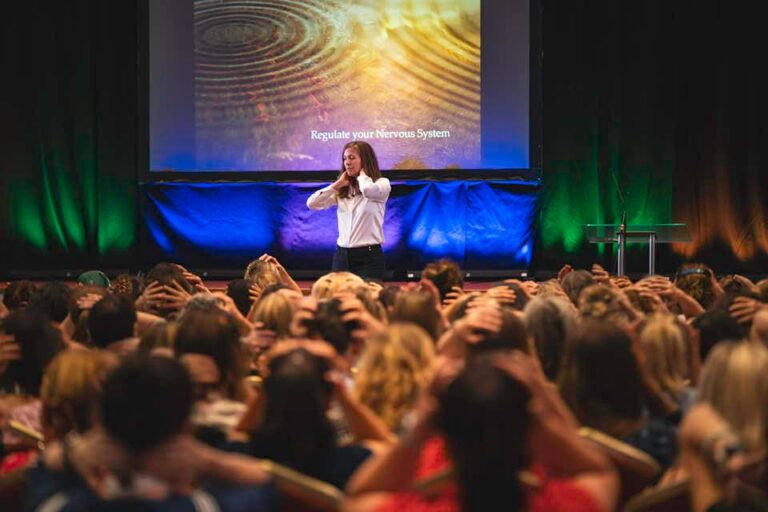By Lisa Dion, LPC, RPT-S
The more therapists I teach, the more aware I become that the concept of regulation or becoming regulated is often misunderstood. Many people think that being regulated means being calm, but that isn’t always the case. From a Synergetic Play Therapy Perspective, regulated means I’m mindful and aware of myself. In a moment of regulation, I can think clearly, I can make a conscious choice, I’m able to notice my breath, I’m able to feel grounded, I can speak clearly and I have an experience of being in my body. I’m connected to myself.
Regulation in the nervous system occurs when we become consciously aware of ourselves. In those moments, we’re aware that we’re separate form whatever is happening. We know that we’re not the anger or sadness. We’re larger than that experience, if only for a brief moment. That moment of awareness empowers us to attach and connect to ourselves. We can therefore be regulated in our anger. We can be regulated in our sadness. We can be regulated in our anxiety.
As an example, let’s say something totally irritates me. My perception of the challenge causes me to become dys-regulated and detach from myself. I end up in a state of hyper-arousal, and I’m not at all connected to myself. I’m feeling consumed by the sensation of irritation inside me. Then I become aware. I notice that I’m talking faster. I notice I’m tapping my fingers, my right leg is moving and my heart rate is picking up. I notice that my body feels activated inside. As the activation intensifies, I get a little dizzy. I start to notice and pay attention to everything I feel and see. As I do, I begin to come back to myself. I’m no longer detached. I can feel the intensity coursing through my body, and I’m aware. I’m having moments of regulation during intensity, and I definitely don’t feel calm. This is the type or regulation we’re trying to teach our child clients. We want them to learn how to reattach to themselves when they become dys-regulated so that they can manage the intensity that occurs inside them.
Regulation on a Continuum
You may have a brief moment of regulation or you may have many moments of regulation that add up to a state of regulation, in which you may feel calm. In the example I just gave, I was having moments of regulation. I mention this because it’s important that as play therapists we understand that becoming calm is neither the goal nor the point of learning how to facilitate aggressive play in the playroom. The point is to learn how to manage the energy of our dys-regulated states and to teach children how to do the same. Understanding this is key to doing this work. If your goal is to stop the energy because you want the energy to calm down, you will inadvertently shut the child’s process down or contain the child in a way that may encourage the energy to remain stuck or spinning within the child rather than being integrated.
We regulate to move toward the intensity, not to get out of it.
Rather than stopping the energy in the playroom, let’s teach our clients how to regulate through the intensity by teaching them to become mindful of their experience. This allows them to move toward their experience instead of running away from it, which can escalate the symptoms. It’s through self-awareness that the energy in the aggressive and death play will begin to integrate, and over time the child will naturally arrive at a state of regulation.
It’s not practical to think a child will never be angry again, never want to hit a friend again or never talk back to an adult again. There will probably also be times when they want to run and hide and put their head under the covers and never come out again. What is practical and possible is teaching kids how to stay connected to themselves when they’re faced with challenges. This is what facilitating aggressive and death play is all about. We want to help children stay connected to themselves during the intensity of their hyper- and hypo-aroused states so they can integrate the energy and become self aware. We want to teach them that they can feel it and notice it without being consumed by it.
Additional Resources:
- How Trying to be Calm Gets in the Way of Regulation (blog)
- Be Yourself – Therapist Authenticity in the Playroom (blog)
- Lessons from the Playroom Episode 118: How Trying to be Calm Gets in the Way of Regulation





